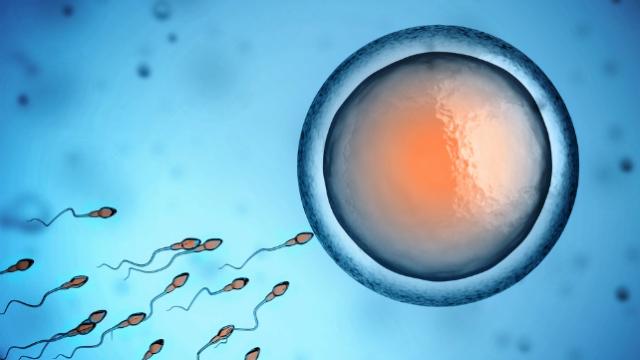It seems like we’re putting QR codes on pretty much everything these days. And that could soon include your sex cells.
Researchers at the Autonomous University of Barcelona came up with a means of attaching microscopic barcodes to sperm and eggs. The barcodes, made of polysilicon and tenth the width of a human egg, are marked with an eight-digit binary ID code. This can prevent awkward hospital mix-ups for IVF patients, for example, keeping the right gametes with the right parents.
Here’s how they do it: For female eggs, the barcode’s carefully attached using a binding protein, and then naturally detaches when the formed embryo enters the womb.
With those tinier, skinnier, energetic sperm, it’s a bit different. The team had to take semen samples and then released thousands of barcode copies into them, trying to land at least one barcode per microliter.
Then, before the IVF procedure, hospital personnel could triple-check the egg’s barcode with a microscope before carrying on. For sperm, the microscope can confirm which small semen sample belongs to which man before they use a sperm from that sample. The team says these barcodes pose no health risks.
It’s not approved for human use — yet. But but experts told NewScientist that the process can be useful in rearing certain animals, like race horses or bulls, where semen from healthy, high-performing animals can fetch a lot of money. So it’s kind of like branding cattle, after all!
